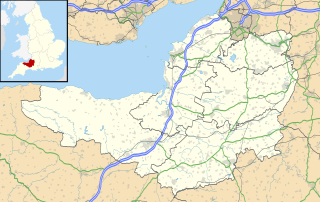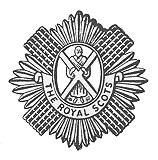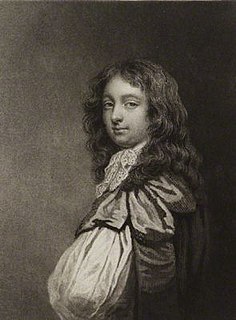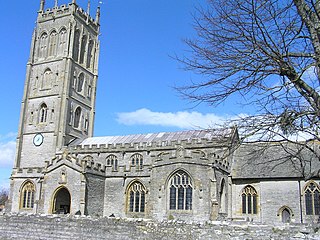 W
WThe Monmouth Rebellion, also known as the Pitchfork Rebellion, the Revolt of the West or the West Country rebellion, was an attempt to overthrow James II. He had become king of England, Scotland, and Ireland upon the death of his elder brother Charles II on 6 February 1685. James II was a Roman Catholic and some Protestants under his rule opposed his kingship. James Scott, 1st Duke of Monmouth, the eldest illegitimate son of Charles II, claimed the throne in an attempt to displace his uncle.
 W
WChristopher Monck, 2nd Duke of Albemarle was an English soldier and politician who sat in the House of Commons from 1667 to 1670 when he inherited the Dukedom and sat in the House of Lords.
 W
WThe Bloody Assizes were a series of trials started at Winchester on 25 August 1685 in the aftermath of the Battle of Sedgemoor, which ended the Monmouth Rebellion in England.
 W
WBridgwater is a large historic market town and civil parish in Somerset, England. Its population currently stands at around 35,886 as of 2011. Bridgwater is at the edge of the Somerset Levels, in level and well-wooded country. The town lies along both sides of the River Parrett; it has been a major inland port and trading centre since the industrial revolution. Most of its industrial bases still stand today. Its larger neighbour, Taunton, is linked to Bridgwater via a canal, the M5 motorway and the GWR railway line.
 W
WThe Church of St Mary in Bridgwater, Somerset, England was built in the 13th century, and has been designated as a Grade I listed building. It is dedicated to Saint Mary, the Virgin. The first vicar was recorded c1170
 W
WThe Bussex Rhine was a rhyne, or sizeable ditch, running outside the village of Westonzoyland in Somerset, England. A rhyne or rhine is a southern English dialect word for a "large open ditch or drain". In the 17th century many rhines were used in Somerset to drain marshy ground.
Louis de Duras, 2nd Earl of Feversham, KG was a French nobleman who became Earl of Feversham in Stuart England.
 W
WAndrew Fletcher of Saltoun was a Scottish writer and politician, remembered as an advocate for the non-incorporation of Scotland, and an opponent of the 1707 Act of Union between Scotland and England. Fletcher became an exile in 1683 after being accused of promoting insurrection. He was appointed the cavalry commander of the Monmouth Rebellion, but shortly after landing in England he killed another leading figure. He again went into exile, this time as a fugitive and with his estates forfeit. He returned with William of Orange, becoming Commissioner of the old Parliament of Scotland.
 W
WThe George Inn in Norton St Philip, Somerset, England, one of a number of establishments that claims to be Britain’s oldest tavern, is located in the centre of the village. It was built in the 14th or 15th century and has been designated as a Grade I listed building.
 W
WHenry FitzRoy, 1st Duke of Grafton, was an illegitimate son of King Charles II of England and his mistress Barbara Villiers. A military commander, Henry FitzRoy was appointed colonel of the Grenadier Guards in 1681 and Vice-Admiral of England from 1682 to 1689. He was killed in the storming of Cork during the Williamite–Jacobite War in 1690.
 W
WGeorge Jeffreys, 1st Baron Jeffreys, PC, also known as "the Hanging Judge", was a Welsh judge. He became notable during the reign of King James II, rising to the position of Lord Chancellor. His conduct as a judge was to enforce royal policy, resulting in an historical reputation for severity and bias.
 W
WJames Scott, 1st Duke of Monmouth, 1st Duke of Buccleuch, KG, PC was a Dutch-born English nobleman. Originally called James Crofts or James Fitzroy, he was born in Rotterdam in the Netherlands, the eldest illegitimate son of Charles II of England, Scotland, and Ireland with his mistress Lucy Walter.
 W
WThe Royal Scots , once known as the Royal Regiment of Foot, was the oldest and most senior infantry regiment of the line of the British Army, having been raised in 1633 during the reign of Charles I of Scotland. The regiment existed continuously until 2006, when it amalgamated with the King's Own Scottish Borderers to become the Royal Scots Borderers, which merged with the Royal Highland Fusiliers, the Black Watch, the Highlanders and the Argyll and Sutherland Highlanders to form the Royal Regiment of Scotland.
 W
WThe Battle of Sedgemoor was the last and decisive engagement between the Kingdom of England and rebels led by the Duke of Monmouth during the Monmouth rebellion, fought on 6 July 1685, and took place at Westonzoyland near Bridgwater in Somerset, England, resulting in a victory for the English army.
 W
WCharles Seymour, 6th Duke of Somerset, known by the epithet "The Proud Duke", was a British peer. He rebuilt Petworth House in Sussex, the ancient Percy seat inherited from his wife, in the palatial form which survives today. According to the Encyclopædia Britannica Eleventh Edition, he was a remarkably handsome man, and inordinately fond of taking a conspicuous part in court ceremonial; his vanity, which earned him the sobriquet of "the proud duke", was a byword among his contemporaries and was the subject of numerous anecdotes; Macaulay described him as "a man in whom the pride of birth and rank amounted almost to a disease".
 W
WFord Grey, 1st Earl of Tankerville, 1st Viscount Glendale, and 3rd Baron Grey of Werke, was an English nobleman and statesman.
 W
WWestonzoyland is a village and civil parish in Somerset, England. It is situated on the Somerset Levels, 4 miles (6.4 km) south east of Bridgwater.
 W
WThe Church of St Mary the Virgin in Westonzoyland, Somerset, England dates from the 13th century and has been designated as a Grade I listed building.